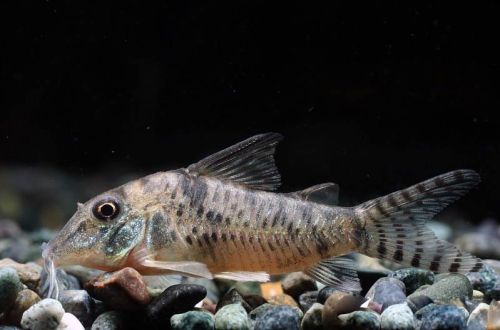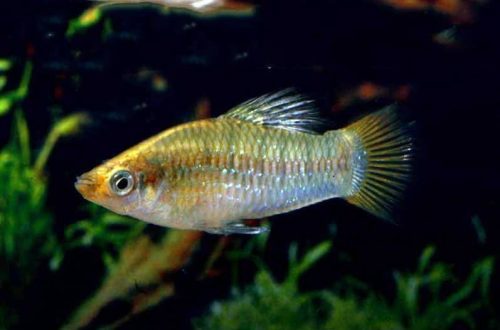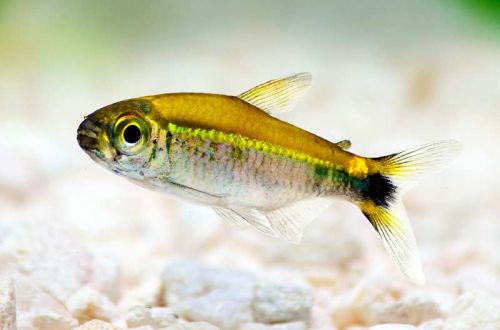
Corydoras gold-bearing
Gold-bearing corydoras, scientific name Corydoras aurofrenatus, belongs to the family Callichthyidae (Shelled or callicht catfishes). The name is associated with a special pigmentation on the head and body, which has a golden sheen. Although the fish was discovered back in 1903, it received its current name only in the 2000s, before that it was called Corydoras sp. “Corrientes” and bore the alphanumeric identifier CW005.

The fish comes from South America, where it inhabits the vast basins of the Parana and Paraguay rivers. The natural habitat covers the territories of southern Brazil, Paraguay and Argentina.
Contents
Description
As described by Axenrot and Kullander in Freshwater Ichthyological Research 2003. The catfish reaches a length of about 5 cm. It has 24–26 lateral shields and a color scheme consisting of two dark spots on each flank, the first under the adipose fin and the second behind the head. An additional pattern is present on the dorsal fin with 3–4 dark stripes and up to 8 on the caudal fin. The upper lobe of the caudal fin is longer than the lower lobe. A characteristic feature is the pigment on the head and body, which gives a golden hue in certain lighting.
Brief information:
- The volume of the aquarium – from 80 liters.
- Temperature – 22-26°C
- Value pH — 6.0–8.0
- Water hardness – soft to medium hard (2-15 dGH)
- Substrate type – sand or gravel
- Lighting – moderate or bright
- Brackish water – no
- Water movement – light or moderate
- The size of the fish is about 5 cm.
- Food – any sinking food
- Temperament – peaceful
- Keeping in a group of 4-6 fish
Maintenance and care
The gold-bearing corridor is one of the unpretentious species. The requirements that he imposes on his content are similar to most other freshwater aquarium fish. This is clean warm water with suitable hydrochemical parameters, balanced nutrition and the absence of aggressive aquarium neighbors. The daily diet can include a wide variety of foods (dry, freeze-dried, frozen, live), as long as they are sinkable and have the right size. As for compatible species, then there will be no difficulty in choosing. Almost all fish of a comparable size that can live in similar conditions will do.





